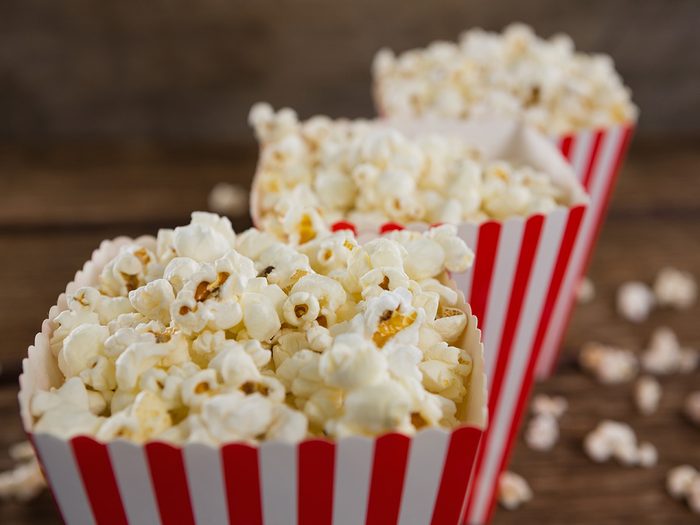
It has few calories — if you pop it the right way
When we talk about the benefits of popcorn eating, we’re talking about air-popped popcorn, not the fatty, butter-drenched stuff you get at the movies. The Center for Science in the Public Interest found that the medium and large popcorn sizes at Regal theaters each had 1,200 calories and 60 grams of saturated fat. A large popcorn at AMC wasn’t much better: 1,030 calories and 57 grams of saturated fat. The healthiest type of popcorn is air-popped, which only has 30 calories. You can use a hot air popper or try this hack: Put 3-4 tablespoons of kernels in a brown paper bag, fold the top of the bag twice to make sure it’s closed, and then microwave for two minutes, or until there’s only a few seconds between pops.

Popcorn could be healthier than fruits and vegetables
Yep, you read that right. Scientists from the University of Scranton found that popcorn is loaded with polyphenols, compounds found in plants that act as antioxidants and can reduce inflammation. Polyphenols are heavily diluted in fruits and vegetables, which are 90 per cent water. Yet popcorn is made up of about 4 per cent water, so the polyphenols are more highly concentrated, especially in the hulls (the hard shells that get stuck in your teeth). One serving of popcorn can contain up to 300 mg of polyphenols, or 13 per cent of the average American’s daily intake. Fruits account for 255 mg of polyphenols per day, and vegetables bring in even less (218 mg per day). That said, popcorn doesn’t have many other vitamins and nutrients, so it can’t completely replace fruits and veggies in your diet. These Canadian-grown fruits and vegetables are your healthiest bet.
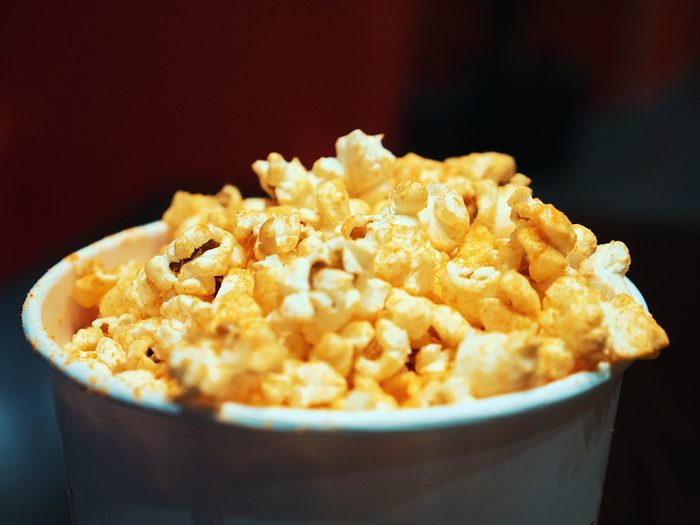
Popcorn may help fight cancer
One of the many powers of polyphenols, like those found in popcorn, is their ability to block enzymes that cancers need to grow and, in doing so, regulate the spread of cancerous cells. The traditional way to reap these health benefits is by eating fruits and vegetables (it’s also one of the ways cancer doctors avoid cancer), but the high concentration of polyphenols makes popcorn eating a healthy alternative. (These other foods are also key for preventing cancer.) Since they can also prevent inflammation and plaque buildup, foods rich in polyphenols can help prevent cardiovascular disease..
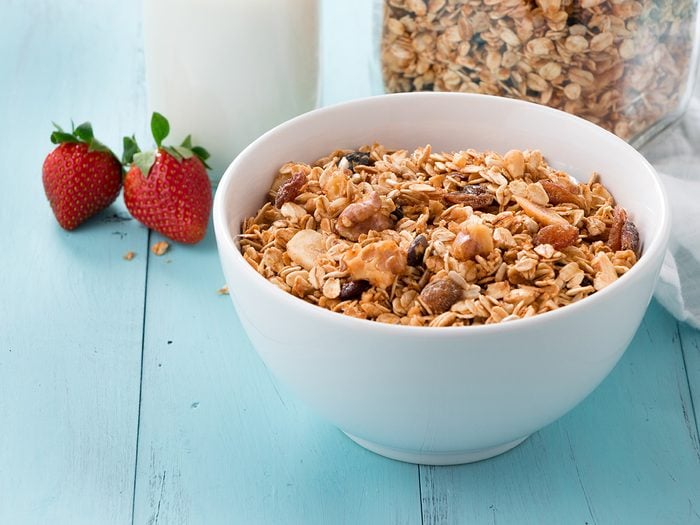
Popcorn gives you your fill of whole grain
Popcorn is the only snack that is 100 per cent unprocessed whole grain. Just one serving contains more than 70 per cent of the recommended daily whole grain intake. Joe Vinson, PhD, the lead researcher on the revealing popcorn eating study from the University of Scranton, explains that even though cereals are considered whole grains as well, that just means that more than half of the weight of those products is whole grain.
Turns out these 8 foods aren’t as healthy as you might think.
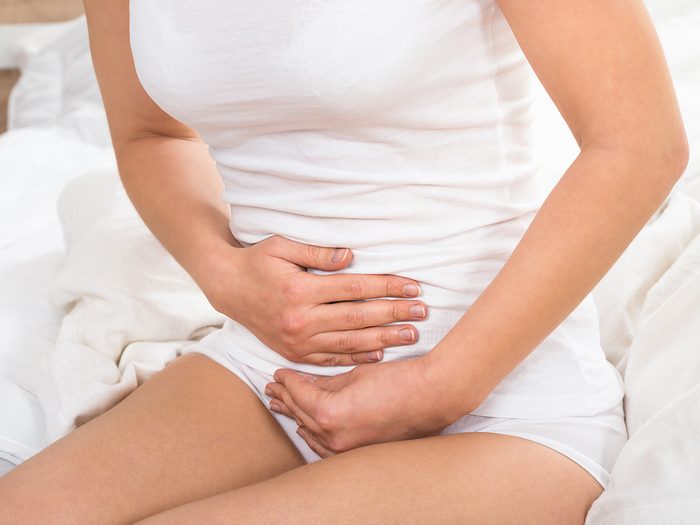
Popcorn may help relieve constipation
Since popcorn is all whole grain, its insoluble fibre helps keep your digestive track in check and prevents constipation. A 2008 study found that people who enjoyed popcorn eating regularly increased their daily fibre intake by 22 per cent and their overall whole grain intake by a whopping 250 per cent. Who knew this small snack could make such a huge impact on digestive health?! Try these other home remedies to relieve constipation.
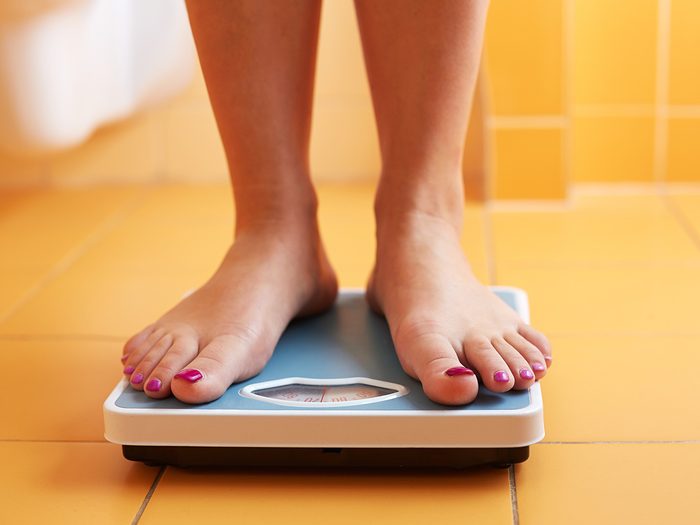
It’s the perfect dieting snack
High-fibre foods take more time to digest than non-fibrous foods, so they keep you fuller longer. Snacking on air-popped popcorn in between meals can make you less tempted by sweets and fatty foods. Just don’t load up on butter and salt. Check out these other healthy snack ideas to keep your diet on track.
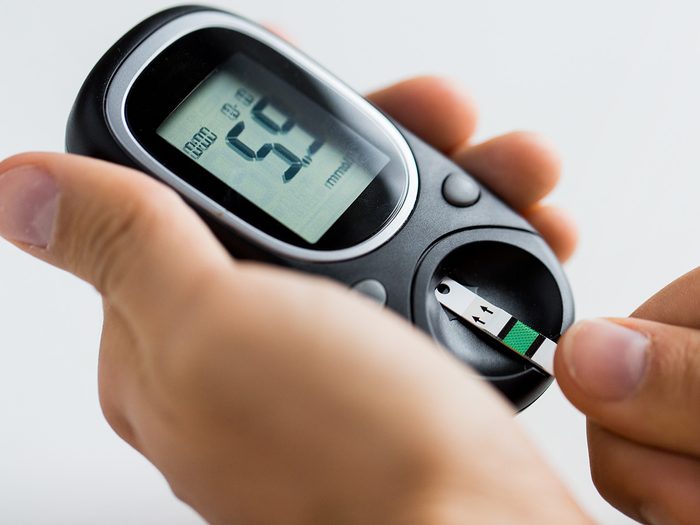
Popcorn is diabetic friendly
Even though fibre is listed on food labels under total carbohydrates, it doesn’t have the same effect on blood sugar as refined carbs, like white bread, that get digested. Fibre isn’t broken down by the body, so it won’t cause a sudden blood sugar spike.
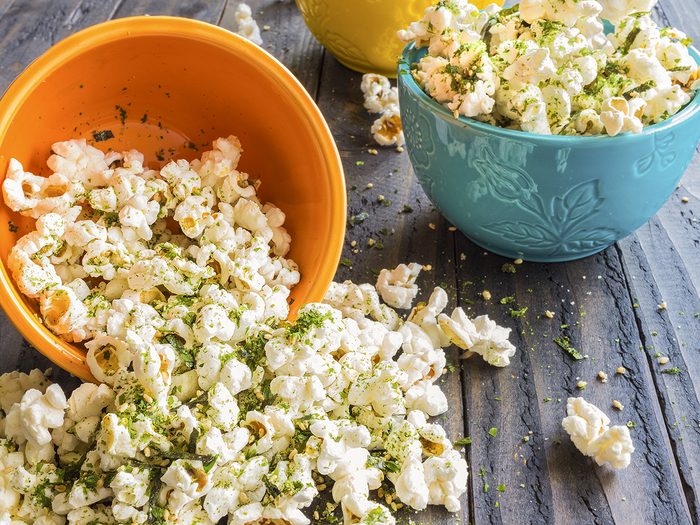
There are endless options for popcorn toppings
You can put way more on popcorn than just salt and butter. Add cinnamon or apple pie spice for a sweet treat. Go spicy with hot sauce, wasabi, or curry. Give your snack an Italian flair with grated Parmesan and a dash of olive oil. Basically, anything in your spice rack can add more flavor without the calories. Here 13 recipes for amazing homemade popcorn.
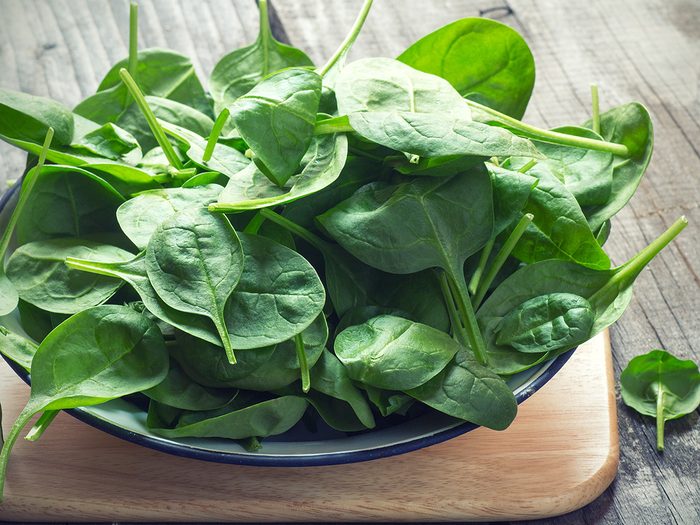
Popcorn has more iron than spinach
Not by much, but it’s true! According to the USDA, one ounce (28 grams) of popcorn contains 0.9 mg of iron, and one cup of raw spinach (30 grams) has 0.8 mg. These numbers seem small, but adult men only need 8 mg of iron in their diet each day. Adult women, on the other hand, need 18 mg per day (because of the blood they lose during menstruation). Almost 10 per cent of women are iron deficient, according to the CDC. So ladies, get your fill of iron however you can. (Especially because iron deficiency can be one of the causes of hair loss.)
